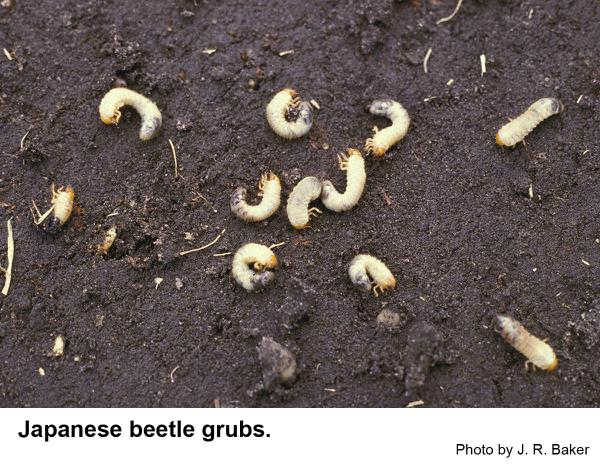Japanese Beetles: the Next Chapter
go.ncsu.edu/readext?813667
en Español / em Português
El inglés es el idioma de control de esta página. En la medida en que haya algún conflicto entre la traducción al inglés y la traducción, el inglés prevalece.
Al hacer clic en el enlace de traducción se activa un servicio de traducción gratuito para convertir la página al español. Al igual que con cualquier traducción por Internet, la conversión no es sensible al contexto y puede que no traduzca el texto en su significado original. NC State Extension no garantiza la exactitud del texto traducido. Por favor, tenga en cuenta que algunas aplicaciones y/o servicios pueden no funcionar como se espera cuando se traducen.
Português
Inglês é o idioma de controle desta página. Na medida que haja algum conflito entre o texto original em Inglês e a tradução, o Inglês prevalece.
Ao clicar no link de tradução, um serviço gratuito de tradução será ativado para converter a página para o Português. Como em qualquer tradução pela internet, a conversão não é sensivel ao contexto e pode não ocorrer a tradução para o significado orginal. O serviço de Extensão da Carolina do Norte (NC State Extension) não garante a exatidão do texto traduzido. Por favor, observe que algumas funções ou serviços podem não funcionar como esperado após a tradução.
English
English is the controlling language of this page. To the extent there is any conflict between the English text and the translation, English controls.
Clicking on the translation link activates a free translation service to convert the page to Spanish. As with any Internet translation, the conversion is not context-sensitive and may not translate the text to its original meaning. NC State Extension does not guarantee the accuracy of the translated text. Please note that some applications and/or services may not function as expected when translated.
Collapse ▲This article was written by Gail Griffin, Extension Master Gardener℠ Volunteer in Lee County.
If you were plagued by the scourge of Japanese beetles earlier this summer, you were not alone. Multitudes of these beetles could be found devouring leaves and blooms of everything from roses to Crape myrtles to fruit trees, leaving skeletal remains behind that once resembled plants. By August, adult females have laid their numerous eggs and completed their life cycle. For those who thought the carnage was over, welcome to phase two.
Adult Japanese beetles prefer damp soil to burrow in and deposit their eggs. After a few weeks, the hatched eggs feed on roots of grasses and shrubs and begin the larval stage as grubs. It is at this point where damage to turf is most noticeable. Large patches of dead grass can be the first indicator. Rolling back the turf in suspected areas will reveal a number of white, “c”-shaped grubs with yellow-brown heads. Control is usually recommended if there are ten or more grubs
heads. Control is usually recommended if there are ten or more grubs
per square foot. If treatment is needed, it will be more successful at this stage when the grubs are smaller in size and closer to the soil surface. As temperatures fall, they dig deeper into the soil and hibernate until the spring. When the weather warms, they begin their ascent closer to the surface and emerge as adults and continue their feeding frenzy on our landscape.
Control of Japanese beetles is an ongoing challenge. They can fly onto your property from other areas causing them to become a pestilence and a pestilence will find you. Think Ernest T. Bass.
Planting non-susceptible plants such as hollies, junipers, and azaleas can be a good alternative. Traps are not generally useful and can end up attracting more beetles. Sweeping them away from plants into a container of soapy water can be effective, but must be done regularly and is often unattainable. Chemical control can be helpful if applied at the time of discovery and if label instructions are followed. Be sure to consider our pollinators when using insecticides. Using liquid or granular formulations instead of dusts can help limit transfer to
bees and other beneficial insects. For recommendations, contact your local N.C. Cooperative Extension office or see our Japanese Beetle publication. Don’t despair. Depending on conditions, the populations of Japanese beetles are less in some years than they are in others. Shoot for the good feeling.
Gail Griffin is an Extension Master Gardener Volunteer in Lee County.




